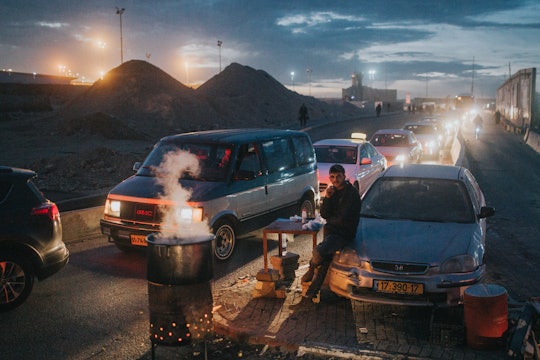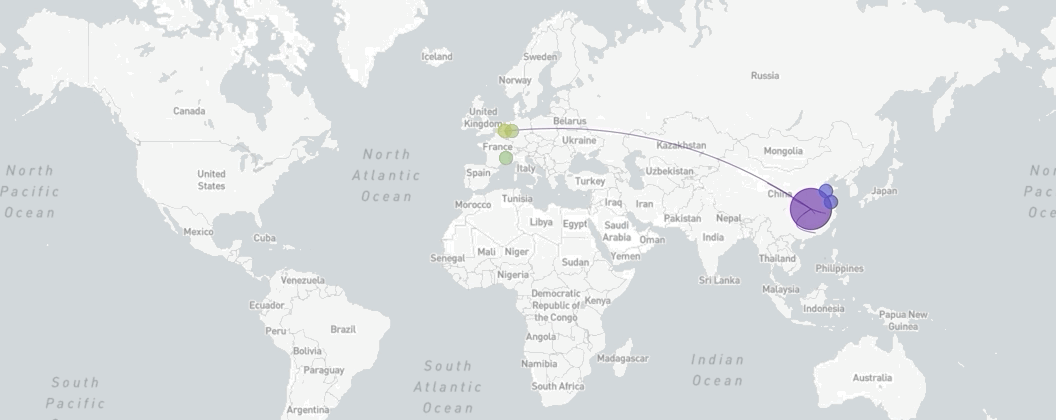
Photo by Cole Keister on Unsplash
Here's why border control will not stop coronavirus
A robust public health response is the best method for controlling epidemics
On December 31, 2019, the World Health Organization (WHO) received a report of the first known cases of the disease we now call COVID-19. Over a month later, on February 2, 2020, the United States put its first travel restrictions in place for travelers coming to the states from China. What happened in the interim? Over 14,500 people in 23 countries were infected with the SARS-CoV-2, the novel coronavirus, and counting.
Travel restrictions, though not recommended by the WHO, are a tool that countries use in hopes of stopping the spread of a pathogen into their country. But history has shown that travel restrictions usually only delay the transmission of a pathogen, and are ineffective at stopping it all together.
The impact of travel restrictions during the 2009 H1N1 pandemic is a great example. Mathematical modeling estimated that even if 90% of international air traffic had been restricted, transmission would have only been slowed by about two weeks. A study led by Chiara Poletto from the Institut Pierre Louis d’Epidémiologie et de Santé Publique in France modeled the effect of travel restrictions to control the 2014 Ebola outbreak and came to a similar conclusion, that flight suspensions during the outbreak provided only a few weeks delay in spread. While an additional couple of weeks to prepare a global health response can be crucial – if used wisely – to ready public health systems, the additional costs of travel restrictions call into question whether they’re the most effective way to reduce harm caused by an outbreak.

A map of the world showing the spread of SARS-CoV-2, coronavirus, from December 18th, 2019, to March 8th, 2020
Made via Nextstrain
The consequences of implementing travel restrictions include substantial economic losses and social disruption. Reducing trade by limiting travel can harm the economy of the country already fighting the outbreak. Consequently, countries with future outbreaks may be less likely to report that an outbreak exists to avoid reduced travel and revenue. Travel restrictions can also limit the sharing of information, supplies and health care workers to an outbreak zone, which can hinder public health efforts. The singling out of a country for travel restrictions can lead to the public making associations between individuals from that country and the outbreak. This can lead to increased xenophobia and racism, social ills that can last long after the threat from the virus has waned.
While the epidemic is still growing and changing, a recent study by a team of international researchers led by Matteo Chinazzi of Northeastern University analyzed the effect of China's internal COVID-19 travel restriction, implemented on January 23. The estimated impact of the travel restriction indicated it only slowed the transmission within China by, at most, five days. It did delay overall global spread by 80% until mid-February, but at substantial cost to the physical and mental well-being of Wuhan residents.
Knowing now that the virus was spreading and has continued to spread, both the models and current cases tell the same story for COVID-19 as H1N1 and Ebola: travel restrictions slow viral spread, but do not stop them.
Why doesn't it work? Because of humans. We love to travel. With our technology, we can easily get around the world within a day. And we are persistent: Should something stand in the way of our exploring, humans find a way around it. If we’re not allowed to enter County A from Country B, we can simply hop over to Country C and catch a flight to our choice destination. Experts have warned time and again, that implementing travel restrictions can actually incentivize exposed individuals to go underground or hide potential symptoms so they can move around the world. After all, if you had been looking forward to a trip, and felt fine, wouldn’t you want to continue your adventures?
On February 2, 2020, the US implemented travel restriction to and from China to prevent further spread of COVID-19 . But travel restrictions for one country don’t limit viral movement from other countries that could have quietly growing outbreaks, like those in the Republic of Korea, Italy, and Iran were at the time. And by the time the United States enacted these travel restrictions, there were 22 other countries with documented cases of COVID-19 – none of which were included in US travel restrictions, underscoring the futility of such bureaucratic efforts.
Incubation periods can also limit the efficacy of travel restrictions. An incubation period is the time between exposure and infection with a virus, and the first emergence of symptoms. The longer the incubation period, the further someone can travel, and the more of their fellow humans they can interact with, before knowing that they are sick. SARS-CoV2 (the virus that causes COVID-19) has an incubation period of up to 14 days before someone shows signs of disease. Two weeks gives an infected person plenty of time to hop on an international flight to the US, with an unwelcome viral visitor secretly hitching a ride.
Though travel restrictions aren’t especially effective at stopping the spread of a virus, the potential to slow spread does give us an opportunity to prepare for the inevitable. Two weeks is a good amount of time to get health departments refreshed on the tried and true practices of outbreak containment – like case tracing, isolation, and treatment of the ill, which are methods proven to reduce the spread of a virus.
